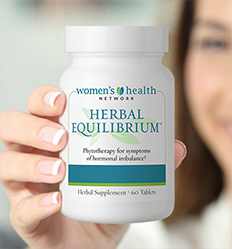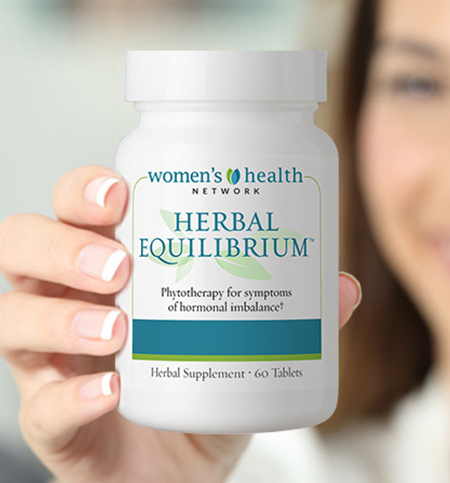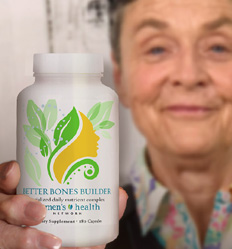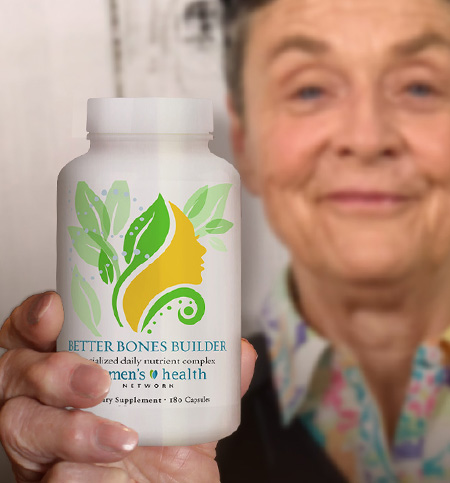By Dr. Sarika Arora and Dr. Susan E. Brown
Many of us are making the mistake of assuming that bone health is something we don’t have to think about until far into the future. But the truth is your 20s or 30s are a critical time to be aware of the signals revealing the destruction of your valuable bone has started.
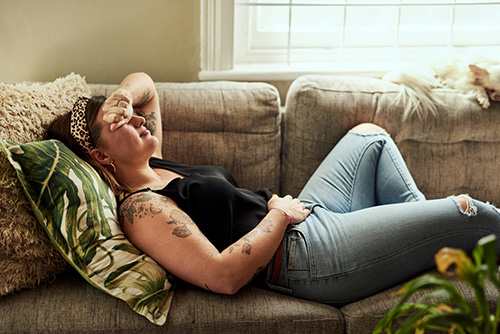
Key warning signs that you’re not building bone — or may already be losing it — are PMS and menstrual irregularities.
Because very few women are aware of the connection between hormonal health and lifelong bone health, we asked for insight from two of Women’s Health Network’s contributors — bone health expert Dr. Susan E. Brown, PhD, and Dr. Sarika Arora, MD, a specialist in hormonal health. Here is what they shared with us about this important topic for women of any age:
What is the connection between hormonal imbalance and bone loss?
Dr. Arora: PMS or menstrual irregularities are two of the first signs in younger women that they’re experiencing the kind of hormonal imbalance that can lead to bone loss. No matter what women have been told, PMS is not normal.
Dr. Brown: When talking about bone health, you really have to focus on changes to the menstrual cycles. Bone health is very much regulated by your levels of estrogen and progesterone. Estrogen affects how quickly old bone is taken away, while progesterone helps stimulate new bone formation. Because both processes are critical for the building of healthy bone, hormones are a great place to start when we talk about bone health and young women.
Dr. Arora: During the different phases of your menstrual cycle, your levels of estrogen and progesterone naturally rise and fall to support ovulation, thickening of the uterine lining and eventually the menstrual phase. In a normal cycle, estrogen rises during the first few weeks, and then once ovulation occurs, it begins to fall. Progesterone then increases in the second half of the cycle, called the luteal phase.
If the balance of estrogen or progesterone is disrupted, problems may start including progesterone deficiency or estrogen dominance. In addition to bone loss, these imbalances can lead to fibroids, endometriosis, heavy bleeding, fibrocystic or tender breasts, and ovarian cysts. Women may also experience problems with fertility. Some experience “anovulatory cycles,” which are likely caused by progesterone deficiency. Anovulatory cycles may appear normal, but they’re not. In this situation the ovaries do not release an egg and pregnancy isn’t possible. Further, since it’s the egg that stimulates progesterone production, menstrual cycles with ovulatory or luteal phase defects are associated with low progesterone and women with low progesterone may have difficulty carrying a pregnancy to term. In addition, low progesterone limits the development of peak bone mass.
I’m often asked, What is a normal cycle? Time-wise, “normal” is about 27 or 28 days, with shorter cycles lasting between 21-25 days. Of course, irregularity can mean even longer intervals, such as 35 days, between the menses. Tracking your menstrual cycle will help you understand your body and identify any irregularities.
What leads to progesterone deficiency or excess estrogen?
Dr. Brown: Twenty percent of women actually have luteal phase defects that lead to progesterone deficiency, according to Dr. Jerilynn Prior, who’s an expert in menstrual cycle and ovulation research. In these women, estrogen rises in a nice curve as it should, but often the progesterone is not high enough to balance it, and that leads to an excess of estrogen and hormonal imbalance.
There’s also an important link between progesterone and stress levels, because the stress hormone cortisol is made of the same substrate of progesterone. The body has a triage system that lets it do what is most needed first. Protecting itself from an immediate threat — real or perceived — by making cortisol is more important than making progesterone for the long-term ability to reproduce. So that’s what the body is going to do every time.
Dr. Arora: We also get increased estrogen levels from our environment. The number one reason is from our exposure to dangerous pesticides such as BPA through things like water bottles. BPA is the substance that’s used to mold plastic into the shape of a bottle. BPA has the same chemical structure as an estrogen, but it’s a foreign estrogen to our body. It’s not the same chemical structure as the estrogen we’re born with. There’s definitely “good” and “bad” when it comes to different kinds of estrogen.
Special bone health considerations for women in their 20’s, 30’s and 40’s
Your early or mid-20s you naturally start losing bone from the peak mass of your teens.
- Your bone mass peaks, but then plateaus and quickly leads to some degree of loss.
- Use of birth control pills suppresses your body’s own ability to make estrogen and progesterone and may also deplete nutrients.
- Have your Vitamin D level checked. Women who are pregnant need a level of 50 or more to transfer the D in utero.
Your 30s:
- You can still build bone.
- If you’re noticing your cycles are becoming irregular, talk to your healthcare practitioner about having your hormone levels checked.
- Incorporate a regular exercise program, even as your life grows busier.
Your 40s:
- You lose the most bone in the first few years before menopause.
- Bone loss always parallels muscle loss — think of those things together. If you have avoided exercise up until now, this is the time to start!
Dr. Brown: You really see a multiplier effect with all of the different kinds of pesticides and plastics that result in xenoestrogens, which are the “bad” estrogens.
Dr. Arora: Plus, if there’s excess adipose tissue all those extra fat cells are making more estrogen to add to what’s already a state of “estrogen dominance.”
Dr. Brown: The key to finding the right balance is to enhance your progesterone levels, while at the same time naturally detoxifying and limiting your exposure to harmful forms of estrogen.
What steps can you take to rebalance your estrogen and progesterone levels?
Reduce your negative response to stress
Dr. Arora: Emotional stress is definitely the number one factor for hormonal imbalance. Our emotions control everything that happens from head to toe. I think about half of my patients are in the cycle of just going to work, going home and not doing anything to deal with stress, and that’s when we see hormonal imbalance or PMS.
Dr. Brown: No doubt that there will always be stress! But the feeling of “hey I feel frustrated” is a sign to begin seeking solutions.
Dr. Arora: I will ask my patients to tell me what gives them joy. That’s what we all need to start incorporating — if not every day — at least once a week. More joy.
For me, I find joy spending time with my loved ones and with my friends. I love having mini dance parties at my house where we play the music that makes us want to dance and we just jump up and down and move in every direction.
Dr. Brown: Jumping for joy! I always love to be outside. We are a part of nature and being outside can help put your body in harmony with nature.
Of course, my favorite indoor anti-stress activity is meditation and being around people who have developed a heightened state of awareness. I love learning about these spiritual sciences and I really love meditation retreats.
Get enough nutrients
Dr. Brown: In addition to emotional detox, we need physical detox. Many nutritional factors can enhance the work of the liver, which is our major detoxifying organ Getting enough nutrients that support bone building is crucial.
Dr. Brown’s top 6 questions to ask yourself for better bones
- Are you experiencing PMS or menstrual irregularities? Tracking your menstrual cycle can help you understand any irregularities.
- Do you know your Vitamin D level? Aim for at least 50 ng/ml.
- Are you getting all the 20 key nutrients? See a complete list.
- Are you exercising for bone health?
- Do you know common “anti-nutrients?” Avoid excessive alcohol, sugar and tobacco.
- Do you worry excessively or are you unhappy much of the time?
Dr. Arora: The liver is responsible for getting out the excess estrogen. For example, lignans found in flax help do this by binding to excess estrogen and eliminating it. I also recommend broccoli, Brussels sprouts, cauliflower and kale because they have high levels of indole-3-carbinol, which promotes higher levels of the good estrogen.
Dr. Brown: Nutrition is also key for younger women who may be exercising frequently or are just very active. There’s still some old thinking around that tells us women’s bodies are not capable of high intensity exercise because they start missing their periods. Well, Dr. Prior talks about the concept of the Female Athletic Triad and how most issues related to the menstrual cycle and exercising are due to under-eating rather than over exercising. In fact, building muscle and building bone go hand in hand — think of these things together. But if you’re going to exercise several hours a day, you do need to make sure you’re getting enough nutrient-dense food.
Dr. Arora: I make sure to talk with my patients in their 20s about their menu plans so that they think about getting enough protein, healthy fats, greens, omega 3’s and other key nutrients to support hormonal balance.
I also check Vitamin D levels on all my patients. It’s especially important here in New England. Some of my patients have levels as low as 10 when I want to see them at least at 50!
Dr. Brown: Getting enough Vitamin D is crucial. In fact, I would say knowing your Vitamin D level so that you’re getting the optimal amount is number one on the list of things young women can do for their bone health.
It is also so important that we move beyond the idea that only calcium is needed for bone health. The body needs 20 key nutrients every day to keep bone strong and make sure that the nutrients needed to build bone are not being depleted by harmful acids.
Better bones, better body…. better future!
Dr. Arora: I talk with every woman first about her reasons for making healthy change. What’s her goal? And I keep coming back to that goal if she gets off track (as we all can do!). Some women say they want to be healthy for their kids or family. If a woman is unhappy, we work to figure out what is impeding her from having a happier life. Every woman deserves to be happy and healthy.
Dr. Brown: No matter what, we are all seeking peak performance and wellness, to be strong and happy, to do everything we want in our lives — all these things will encourage better bone health.







